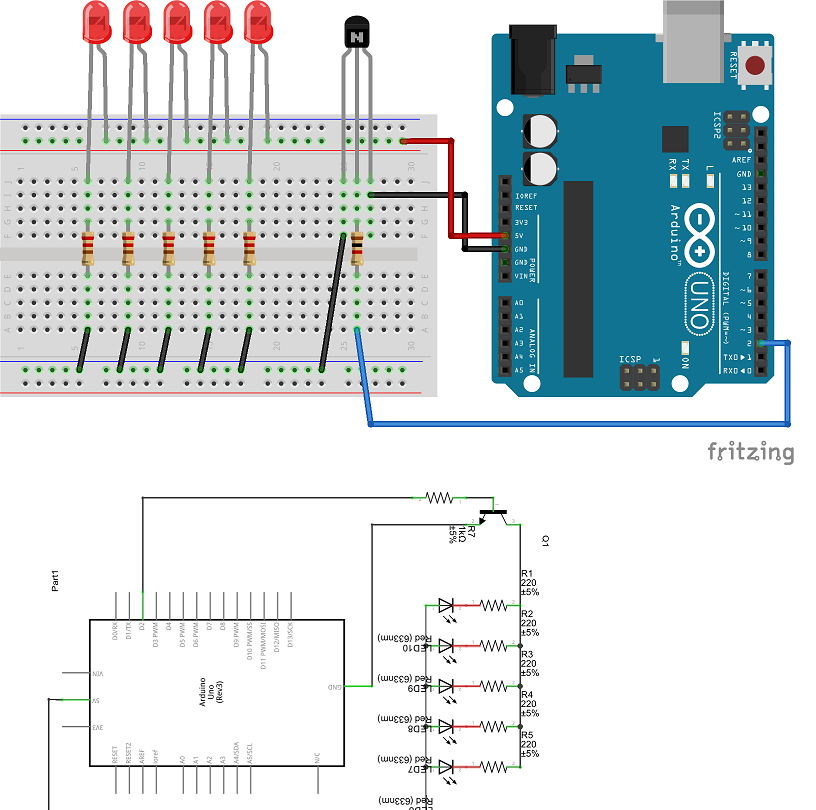I'm totally new to Arduino, and microcontrollers for that matter, so I'm having a hard time figuring out how to connect LEDs to multiple pins, but using a common external power supply...
I've created a starting light that's connected to pin A0-A4 + A5 (turn all LEDs on). I hooked each LED to its own pin directly (A0-A4) for the countdown part ("5, 4, 3, 2, 1, ..."), and then 5 additional LEDs to pin A5 ("GO!").
For the countdown part, when only one LED is on at a time, there's enough power. But if I were to light them all up at the same time, there won't be. So I figured that I should put a relay into the mix for that part, and have them draw power from an external 12 V power supply.
I did manage to make the relay work in the circuit - switching all LEDs on/off, and getting power from the external power supply, but only through one pin.
I'm not sure how to have the start lights use an external power supply, and at the same time get signals from multiple pins. How do I do that?
I'm sorry if my description is unclear. So please let me know if you need more information.
- The LEDs are 3.4 V 20 mA.
- The power supply I'm planning to use is 12 V.
I'm planning to have this start light - which is built in its own casing - use its own power supply, while the Arduino is running of the power from USB. So all I want to do, is to have the signals sent over to this starting light unit, and not power and ground.
UPDATE:
Here's a quick overview of how I'm testing this whole thing at the moment:

The 5 red countdown LEDs (red) is getting powered by the board itself through the pins, while the 5 "GO!" LEDs (green) are getting powered from a 12 V power supply since they're all are going to be turned on simultaneously.
My question is how I can get both the 5 red LEDs, that uses separate pins, to get powered from the external power supply as well?
Since all the LEDs are built in its own casing, apart from the microcontroller because that also handles other stuff...
Did that make any more sense at all?

